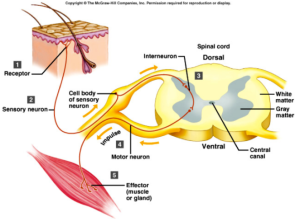Hey,
I am currently in Cambodia so haven’t been able to get online for that long, but I wanted to still make sure you didn’t miss out on your weekly dose of Matt:)
Meanwhile I am hoping to announce so big news in the next 6 weeks, I can’t say too much yet…but I am very excited about it…..keep your eyes peeled
Next week I am off to Wales to study for 3 full days with Dr Phil Richards at strength and conditioning coach to many Olympic athletes, premiership rugby and premiership football clubs
I am looking forward to implementing bits of this into my philosophy and approach when it’s done.
And we are kicking off our new BLAST MUDDERS PROGRAMME on Wednesday evening.
FULL DETAILS can be found HERE.
Doors close Monday
——–///Core Values\\\———
One of my core values is:
To Build Not Break
This relates to the physical and mental aspect of all of our coaching programmes, whether it be 1-1, semi private coaching, fitness camps or online mentorships.
Liam Yeo, who coaches for me actually wrote this article recently in a subject area he is very hot on.
Here it is for you ……..

Dealing with Persistent Pain
July 14, 2013 by liamyeo
A real pain in the neck: Ways to deal with persistent pain.
A high number of people suffer from persistent or chronic pain at some point throughout their lives, or have recurring musculoskeletal injuries that seem to ˜keep flaring up” causing a repetitive cycle of frustration and inactivity.
But what is chronic pain? I’d like to take this time to change your perception of persistent pain and make you impervious to its effects.
What if I were to tell you that CHRONIC PAIN DOESN’T EXIST? You wouldn’t believe me. Allow me to elaborate;

Initially, when we suffer an injury the immediate (acute) pain experience is inflammatory in nature. By this I mean that as a natural response to damage of the cells in your body, important chemicals are released into the blood to bring on immediate healing through inflammation (swelling). The body as a machine is incredibly clever and efficient like that. These chemicals released by the damaged tissues excite the nerves within the surrounding area to send danger signals (not pain) to the brain via the spinal cord.
Within the brain is an important region called the Thalamus that will interpret these signals based on the magnitude of damage and previous experience or your own perception of the incident. Thus high levels of emotional stress have been reported to increase pain levels despite the level of tissue damage remaining constant.
This also explains why people respond differently to the same injury and have different pain thresholds. From the brain a response is sent via a separate set of nerves (motor) projecting a feeling of pain to the damaged area that requires protection. The response is a set of behaviours that are aimed toward protection of the injured site such as a reflex or calling out for help. The brilliant thing about all this is that it happens within the blink of an eye and requires no conscious thought. This is known as a Pain Reflex Arc.

Immediately upon interpreting an injury the body starts the healing process. To correctly heal from injury, it is important that we understand how healing works. Healing of a soft tissue injury occurs in stages. These stages are not independent, and chronologically overlap each other. According to this well documented theory of healing, pain should only occur in the early (bleeding and inflammation) stages, lasting from three days to a couple of weeks in severe cases. This does not mean however that swelling is eliminated during this period in all cases, but that will be discussed at a later date.
So why then does pain become persistent?
Persistent pain usually derives from a combination of learned behaviours and increased sensitivity in the previously injured site. The adaptive behaviours mentioned above are protective within the early stages of damage however become inhibitory during the later healing process.
Subconsciously the brain will stimulate different patterns of movement (such as limping) within the injured limb and an increase in activation of assistant muscles to compensate for the perceived weakness, even if there is no structural weakness to be found!
For example; persistent neck pain is often experienced after shoulder trauma, where the trapezius muscle (is actually rather a thin muscle- not the dominant force producer it is often thought of) is used heavily within shoulder movements to compensate for weakness in the shoulder and arm muscles. This often masks the underlying problem as Medical practitioners will direct their treatment toward the trapezius- thesymptoms, without analysing weakness in the shoulder and arm- the cause of the injury.
Adaptation of the CNS and manifestations.
Now, this behavioural manifestation does not work in isolation to cause persistent pain, and to fully understand what is truly happening we need to acknowledge just how efficient the Pain Reflex Arc is and the role of the Central Nervous System (CNS). Now the important thing about the CNS is that it adapts itself to make the Pain Reflex more efficient. Simply put; if the brain is sent information regarding the previously injured limb, then the original response has been memorised and sent out from the brain to the surrounding and previously injured structures to illicit pain, as a protective mechanism despite there being no structural damage.
This process becomes more and more efficient and is in fact a conditioned response, the same way a dog is taught to salivate at the ringing of a bell (except salivation is the pain response and the bell ringing could be moving the limb in a way you perceive to be painful).
To add further salt to the wound, the changes within the pain response stimulate whatâ™s called Central Sensitisation; which is an increased responsiveness of the sensory nerves to normal stimulation, i.e. more feeling is experienced at the previously injured site despite lesser intensities of touch and movement.Effectively the sensory nerve volume is turned up! (For more about Central Sensitisation, see the article â˜Trigger points. What they are, how you get them and how to avoid themâ™.)
So what does all this mean to you?
Well essentially the role of a Sports Therapist (that’s me) is to facilitate the progression through the healing stages and to encourage normal mechanics of the injured site including using the right muscles in the correct way.
Your mind needs to be taught to acknowledge often with chronic injuries the signals your body sends may be misleading, and no damage is present at the area of pain. It is also important to seek advice upon such a discovery that there may be an underlying condition or weakness, which once addressed can alleviate all symptoms of pain.
But what can you do to help recover from seemingly endless pain?
Here are three tips to successful pain management;
- Optimise the swelling response early. If a lot of swelling is present then apply ice to the area for ten minute intervals, in between allowing the limb to warm. The word â˜optimiseâ™ means we should not be looking to eliminate swelling through drugs but to boost its physiological effects by ice, compression and early mobility treatments.
- Seek early medical advice. If you have reason to believe the initial injury is severe then visit the Emergency Medical Services. Seeking advice from team physicians or private Sports Therapists and Physiotherapists is beneficial early in the healing stages. Donâ™t try and tackle an injury on your own. Incorrect healing can cause even a small injury to manifest into a larger biomechanical pathology if not rehabilitated correctly.
- Do not try to â˜work through the painâ™. There is a difference between normal muscular pain and a chronic pathology. Take rest instead, apply ice to the area and seek further advice from a Medical Professional. Sports Therapy can take steps toward movement correction and further elimination of pain.
Seek advice on Pain reduction, performance enhancement, and optimal health for the active lifestyle.
Liam
For further advice on dealing with common ailments and to book a liamyeosportstherapist@gmail.com
AWESOME STUFF LIAM!!!
That’s it for Friday
Have a great weekend and as usual if you need anything just let me or one of my very special coaches know how we can help you.
Matt
P.s don’t forget to check out the video on the mudders programme 🙂